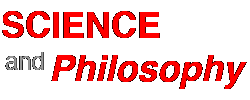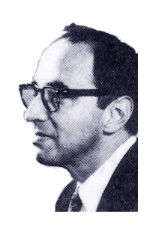Kuhn, Thomas S., The Structure of Scientific Revolutions, 2nd Edition, 1970, University of Chicago Press, Chicago 60637 [excerpt -1400 words] — how fundamental changes in thinking come about.
They were able to do so because they shared two essential characteristics. Their achievement was sufficiently unprecedented to attract an enduring group of adherents away from competing modes of scientific activity. Simultaneously, it was sufficiently open-ended to leave all sorts of problems for the redefined group of practitioners to resolve.
Achievements that share these two characteristics I shall henceforth refer to as ‘paradigms.’ The study of paradigms is what mainly prepares the student for membership in the particular scientific community within which he will later practice. Because the student there joins others who learned the bases of their field from the same concrete models. The person’s subsequent practice will seldom evoke overt disagreement over fundamentals. Workers whose research is based on shared paradigms are committed to the same rules and standards for scientific practice. That commitment and the apparent consensus it produces are prerequisites for ‘normal’ science. It also produces a particular research tradition…
Today's physics textbooks tell the student that light is photons, i.e., quantum-mechanical entities that exhibit some characteristics of waves and some of particles. Research proceeds accordingly. That characterization of light is, however, scarcely half a century old. Before it was developed by Planck, Einstein, and others early in this century, physics texts taught that light was transverse wave motion, a conception rooted in a paradigm that derived from the optical writings of Young and Fresnel in the early nineteenth century. Nor was the wave theory the first to be embraced by almost all practitioners of optical science. During the eighteenth century the paradigm for this field was provided by Newton's Opticks, which taught that light was material corpuscles. At that time, physicists sought evidence, as the early wave theorists had not, of the pressure exerted by light particles impinging on solid bodies.
These
transformations of the paradigms of physical optics are scientific
revolutions, and the successive transition from one paradigm to
another via revolution is the usual developmental pattern of mature
science…
The history of electrical research in the first half of the eighteenth
century provides an example of the way a science develops before
it acquires its first universally received paradigm. During that
period, there were almost as many views about the nature of electricity
as there were important electrical experimenters. All their numerous
concepts of electricity had something in common, they were partially
derived from one or another version of the mechanical-corpuscular
philosophy that guided all scientific research of the day. Yet though
all the experiments were electrical and though most of the experimenters
read each other’s works, their theories had no more than a
family resemblance.
One early group of theories, following seventeenth-century practice,
regarded electrical attraction and frictional generation as the
fundamental electrical phenomena. This group tended to treat repulsion
as a secondary effect due to some sort of mechanical rebounding
and also to postpone for as long as possible both discussion and
systematic research on the newly discovered effect of electrical
conduction. Other "electricians" (the term is their own)
took attraction and repulsion to be equally elementary manifestations
of electricity and modified their theories and research accordingly.
But they had as much difficulty as the first group in accounting
for any but the simplest conduction effects. Those effects, however,
provided the starting point for still a third group, one which tended
to speak of electricity as a “fluid” that could run through
conductors. This group in its turn, had difficulty reconciling its
theory with a number of attractive and repulsive effects. Only through
the work of Franklin and his immediate successors did a theory arise
that could account for very nearly all these effects and that therefore,
could and did provide a subsequent generation of "electricians"
with a common paradigm for its research… It suggested which
experiments would be worth trying and which would not and therefore
guided research.
[Kuhn goes on to make the point that scientists working under the guidance of an accepted paradigm spend long and happy careers enlarging the factual basis of the paradigm and increasing the extent of the match between those facts and the paradigm’s predictions. This is a enormous amount of work and is, what he calls, the business of normal science.]
Anomaly within normal science and the emergence of new scientific discoveries
Normal science is a highly cumulative enterprise, eminently successful in its aim, which is the steady extension of the scope and precision of scientific knowledge. Yet one standard product of the scientific enterprise is missing. Normal science does not aim at novelties of fact or theory and, when successful, finds none. New and unsuspected phenomena [anomalies] are, however, repeatedly uncovered by scientific research.
It is as if a game played under one set of rules produces something never seen before and the rules [the paradigm] needs to be changed so that the new thing can fit in.
After they [the anomalies] have become parts of science, the enterprise, at least of those specialists in whose particular field the novelties lie, is never quite the same again. But novelty ordinarily emerges only for the scientist who, knowing with precision what he should expect under normal science, is able to recognize that something has gone wrong. Anomaly appears only against the background provided by the paradigm. The more precise and far-reaching that paradigm is, the more sensitive an indicator it provides of anomaly and hence of an occasion for paradigm change.
Now what do scientists do when confronted by even severe and prolonged anomalies? Though they may begin to lose faith and then to consider alternatives, they do not renounce the paradigm that has led them into crisis…
Once it has achieved the status of paradigm, a scientific theory is declared invalid only if an alternate candidate is available to take its place. The decision to reject one paradigm is always simultaneously the decision to accept another.
As more and more anomalies to the existing paradigm are found, a crises situation develops. Attempts are made to ‘fix’ the old paradigm. If the fix is unsatisfactory and an alternative paradigm is proposed that includes both the old and new facts, a scientific revolution occurs.
Revolutions as Changes of World-view
Examining the record of past research, the historian of science may be tempted to exclaim that when paradigms change, the world itself changes with them. Led by a new paradigm, scientists adopt new instruments and look in new places. Even more important, during revolutions scientists see new and different things when looking with familiar instruments in places they have looked before. It is rather as if the professional community had been suddenly transported to another planet where familiar objects are seen in a different light and are joined by unfamiliar ones as well. Of course, nothing of quite that sort does occur: there is no geographical transplantation; outside the laboratory everyday affairs usually continue as before. Nevertheless, paradigm changes do cause scientists to see the world of their research-engagement differently. We may say that after a revolution scientists are responding to a different world.
[An outline of the complete text and a synopsis of the chapters prepared by Professor Frank Pajares of Emory University is available at http://www.emory.edu/EDUCATION/mfp/Kuhn.html ]


